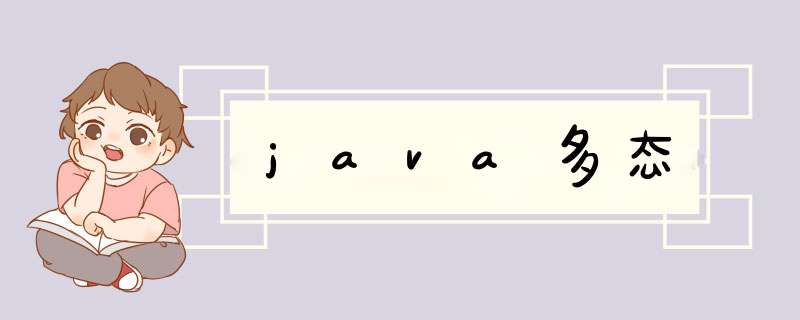
- 多态
- instanceof
- 类型之间的转换
- 即同一方法可以根据发送对象的不同而采用多种不同的行为方式
- 一个对象的实际类型是确定的,但指向对象的引用类型有很多
- 多态存在的条件:
- 有继承关系
- 子类重写父类方法
- 父类引用指向子类对象
- 注意:多态是方法的多态,不是属性的多态
代码示例:
父类Person
package com.ts.Demo03;
public class Person {
public void run(){
System.out.println("run");
}
}
子类Student
package com.ts.Demo03;
public class Student extends Person{
}
主方法类
package com.ts;
import com.ts.Demo03.Person;
import com.ts.Demo03.Student;
public class Application {
public static void main(String[] args) {
//一个对象的实际类型是确定的
//new Student();
//可以指向的引用类型就不确定了:父类的引用指向子类
Person s1 = new Student();
Student s2 = new Student();
Object s3 = new Student();
s1.run();
s2.run();
}
}
运行结果:
2.当在上面的子类Student中进行run()的重写,会得到以下结果:
package com.ts.Demo03;
public class Student extends Person{
public void run(){
System.out.println("son");
}
}
注意:Student能调用的都是自己的或者继承父类的
Person是父类,可以指向子类,但不能调用子类独有的方法
多态的注意事项:
- 多态是方法的多态
- 父类和子类有联系(类型转换异常:ClassCastException)
- 存在的条件:
- 继承关系
- 方法需要重写
- 父类引用指向子类对象(father f1 = new Son())
- 哪些方法不能被重写:
- static方法,属于类,不属于实例
- final 常量
- private方法
判断两个类之间是否存在父子关系
package com.ts;
import com.ts.Demo03.Person;
import com.ts.Demo03.Student;
import com.ts.Demo03.Teacher;
public class Application {
public static void main(String[] args) {
//Object>String
//Object>Person>Student
//Object>Person>Teacher
Object obj = new Student();
System.out.println(obj instanceof Student);//true
System.out.println(obj instanceof Object);//true
System.out.println(obj instanceof Person);//true
System.out.println(obj instanceof Teacher);//false
System.out.println(obj instanceof String);//false
System.out.println("==============================");
Person person = new Student();
System.out.println(person instanceof Student);//true
System.out.println(person instanceof Object);//true
System.out.println(person instanceof Person);//true
System.out.println(person instanceof Teacher);//false
//System.out.println(person instanceof String);//编译报错,Person类与String类无关。
System.out.println("================================");
Student student = new Student();
System.out.println(student instanceof Student);//true
System.out.println(student instanceof Object);//true
System.out.println(student instanceof Person);//true
//System.out.println(student instanceof Teacher);//编译报错
//System.out.println(student instanceof String);//编译报错
//总结:先判断两个类之间是否有关系,如果无关,编译报错,若有关,进行new出的对象所属的类进行比较,如果是父子类为true,否则为false。
//eg:Person person = new Student();
//System.out.println(person instanceof Teacher);//Person类与Teacher是父子类,有关系,然而person对象所属Student类与Teacher无关(不是父子类),所以输出false。
//System.out.println(person instanceof String);//Person类与String类毫无关系,所以无法编译
}
}
总结:先判断两个类之间是否有关系,如果无关,编译报错,若有关,进行new出的对象所属的类进行比较,如果是父子类为true,否则为false。
eg:Person person = new Student();
System.out.println(person instanceof Teacher);
Person类与Teacher是父子类,有关系,然而person对象所属Student类与Teacher无关(不是父子类),所以输出false。
System.out.println(person instanceof String);
Person类与String类毫无关系,所以无法编译
类型之间的转换强制转换:高------->低,父--------->子
Person person = new Student(); Student student = (Student) person;
这样父类就可以用子类的方法了。
注意:
- 父类引用指向子类对象
- 子类转化为父类,向上转型,不需要强制转换,可能丢失一些方法
- 父类转化为子类,向下转型,需要强制转换
- 方便方法调用,减少重复代码,简洁
欢迎分享,转载请注明来源:内存溢出

 微信扫一扫
微信扫一扫
 支付宝扫一扫
支付宝扫一扫
评论列表(0条)